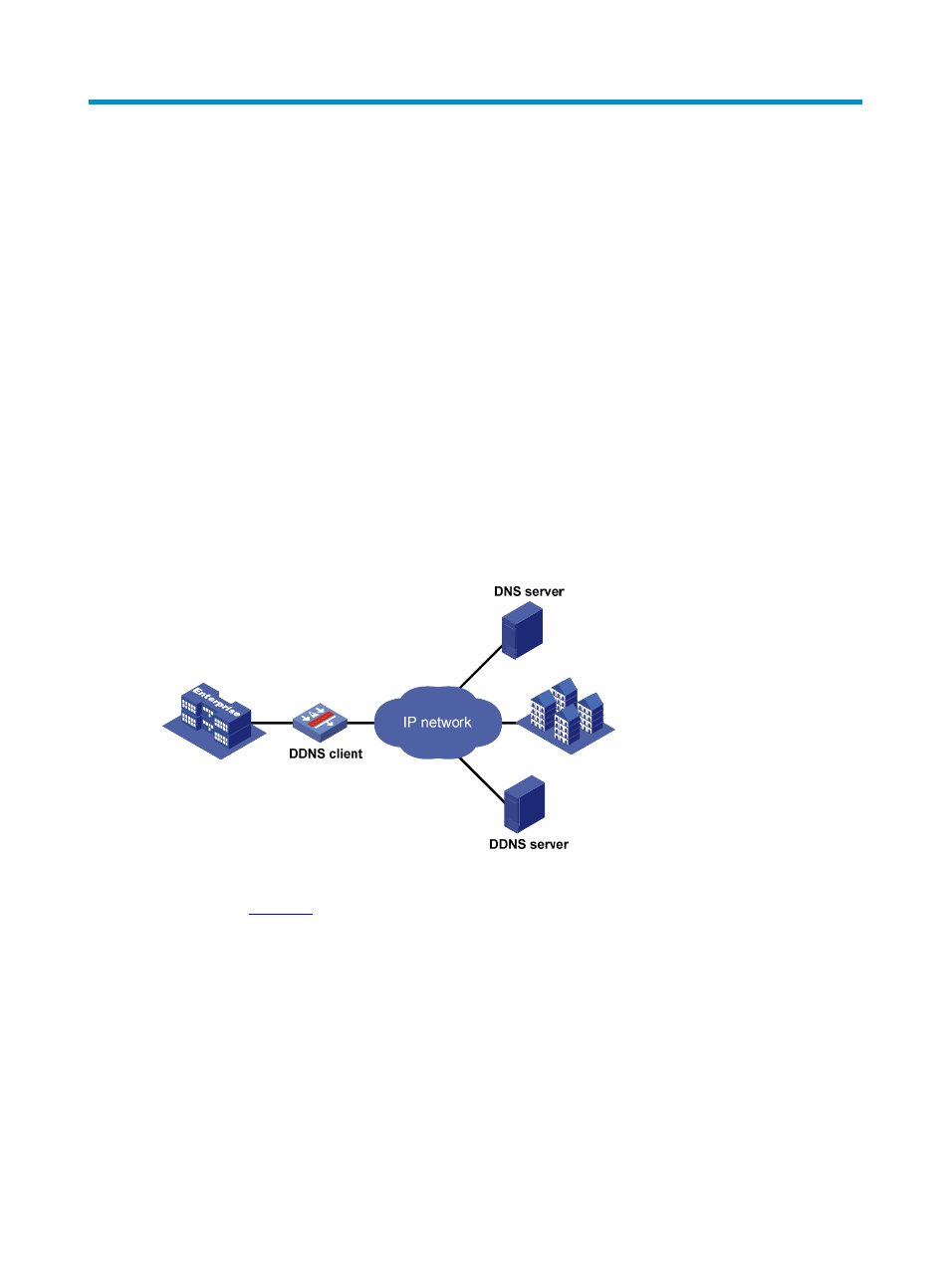Ddns configuration, Ddns overview, Introduction – H3C Technologies H3C SecPath F1000-E User Manual
Page 269: Ddns networking application

1
DDNS Configuration
DDNS Overview
Introduction
Although DNS allows you to access nodes in networks using their domain names, it provides only the
static mappings between domain names and IP addresses. When you use the domain name to access
a node whose IP address has changed, your access will fail because DNS leads you to the IP address
that is no longer where the node resides.
Dynamic Domain Name System (DDNS) can dynamically update the mappings between domain
names and IP addresses for DNS servers to direct you to the latest IP address corresponding to a
domain name.
DDNS Networking Application
Figure 15 DDNS networking application
As shown in
, DDNS works on the client-server model.
•
DDNS client: A device that needs to update the mapping between the domain name and the IP
address dynamically. An Internet user usually uses a domain name to access the server providing
application layer services, such as an HTTP server or an FTP server. When its IP address changes,
the application layer server runs as a DDNS client that sends a request to the DDNS server for
updating the mapping between the domain name and the IP address.
•
DDNS server: Informs the DNS server of latest mappings. When receiving the mapping update
request from a DDNS client, the DDNS server tells the DNS server to re-map between the domain
name and IP address of the DDNS client. Therefore, the Internet users can use the same domain
name to access the DDNS client even if the IP address of the DDNS client has changed.
